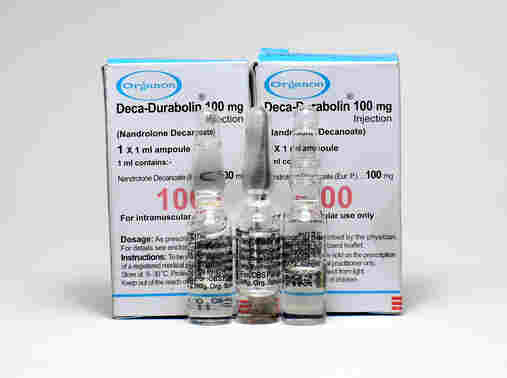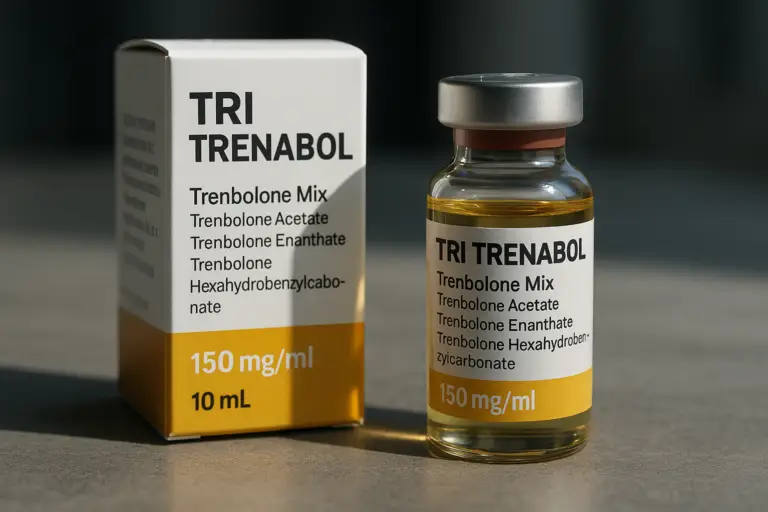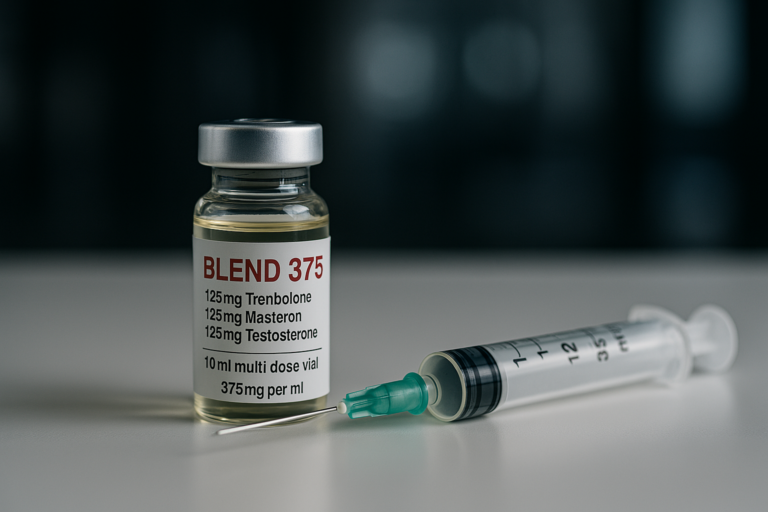(Nandrolone Phenylpropionate)
Durabolin, crafted by Organon in the late 1950s, stands as an anabolic steroid officially designated Nandrolone Phenylpropionate. Its composition closely mirrors Organon’s Deca Durabolin (Nandrolone Decanoate), differing solely in the attached ester. This subtle variance positions Durabolin, or NPP as it’s commonly known, as a swifter-acting iteration of Nandrolone. Despite its earlier release compared to Deca Durabolin, the latter has historically held sway in the Nandrolone market.

Though Organon continues to produce Durabolin, its accessibility pales in comparison to Deca Durabolin. Nonetheless, recent years have witnessed a modest surge in demand, driven by its adoption in performance enhancement circles.
Durabolin emerges as an exceptional asset in both therapeutic and performance domains. In medical applications, it stands alongside testosterone as a pivotal anabolic steroid, offering extensive benefits. Yet, its full potential remains largely unrealized due to the pervasive controversy surrounding anabolic steroids, particularly in the United States. Despite its notable medicinal advantages, Durabolin distinguishes itself as a premier catalyst for lean muscle mass among anabolic steroids. Its unique capacity to foster high-quality mass while maintaining a robust tolerance sets it apart. Furthermore, it boasts a prominent role as a top-tier steroid for enhancing athletic performance, delivering notable enhancements in recovery and endurance.
Effects and uses of Durabolin
Understanding the functions and characteristics of Durabolin unveils its therapeutic advantages, which are particularly prominent in performance enhancement, the primary focus for most men. However, it’s important to recognize that performance-based supplementation serves various purposes beyond solely building lean muscle mass. While this is a primary goal, it’s not the sole objective.

For individuals in the off-season seeking to build substantial lean mass, Durabolin proves to be an excellent choice. Despite its faster action compared to Deca Durabolin, the gains may still occur gradually, yet they are of exceptional quality. Although water retention is a possibility, it’s typically manageable for most men. Significant increases in lean tissue are achievable with Durabolin, contingent upon consuming sufficient calories to support growth. While a caloric surplus is necessary, Durabolin’s metabolic enhancing effects can help limit body fat gain during this phase. Moreover, its relief and recovery properties are invaluable during intense off-season training.
While Durabolin is primarily associated with bulking cycles, it can also play a crucial role in cutting cycles. By preserving lean muscle mass during caloric restriction, Durabolin prevents the loss of muscle tissue often experienced during fat loss phases. Additionally, its use during dieting provides relief, endurance, and aids in recovery, alleviating the strain of rigorous dieting.
Another noteworthy aspect of Durabolin is its direct athletic enhancement. While it may not be a premier strength-increasing steroid, its efficacy lies in enhancing muscular endurance, recovery, and relief. For athletes engaged in competitive sports, Durabolin serves as an invaluable asset, ensuring peak performance throughout the season. Its ability to promote genuine relief and recovery distinguishes it from traditional painkillers, offering athletes a sustainable solution to the physical demands of their sport.
Side Effects
Side effects of Nandrolone are relatively mild compared to testosterone, with only about 20% of the estrogen conversion rate observed with testosterone. This lower estrogen conversion is attributed to nandrolone being less susceptible to aromatization in active steroid conversion sites such as adipose tissue, despite its ability to convert to estradiol in the liver. It’s noteworthy that nandrolone also exhibits progestin-like activity in the body. Consequently, side effects associated with progestin, akin to those of estrogen, may occur, including negative feedback inhibition of testosterone production and an increased propensity for fat storage.
While categorized as an anabolic steroid, Nandrolone can still induce androgenic side effects, particularly at higher doses. These may manifest as oily skin, acne, and heightened body or facial hair growth. Additionally, individuals predisposed to male pattern hair loss may find that anabolic/androgenic steroids exacerbate this condition.
Estrogen side effects
Durabolin exhibits a mild degree of estrogenic activity due to its slight aromatizing nature, where testosterone converts to estrogen. Excessive estrogen levels can trigger gynecomastia, water retention, and elevated blood pressure due to significant fluid retention. Although Durabolin’s aromatase activity is approximately 20% that of testosterone, it still poses potential risks. Additionally, the Nandrolone hormone possesses a notable binding affinity for the progesterone receptor and can stimulate the estrogenic mechanism in mammary tissue. This dual action, coupled with its aromatization tendency, heightens the risk of gynecomastia.
To mitigate estrogenic side effects, many individuals opt for anti-estrogen medications. Selective Estrogen Receptor Modulators (SERMs) like Nolvadex (Tamoxifen Citrate) and Aromatase Inhibitors (AIs) like Arimidex (Anastrozole) are commonly chosen. While AIs are more potent, they can negatively impact cholesterol levels, particularly when used alongside anabolic steroids. On the other hand, SERMs are often sufficient and may even improve cholesterol levels without adverse effects. However, the dosage of Nandrolone and individual sensitivity play significant roles; some may require AIs, but SERMs are typically the first choice if they suffice.
Androgenic Side Effects
Durabolin boasts a relatively high threshold for androgenic side effects, making such effects uncommon in most men. However, potential androgenic side effects may include acne, accelerated hair loss in individuals predisposed to male pattern baldness, and increased body hair growth. These effects are largely influenced by genetic factors and are not typically exacerbated by the hormone’s interaction with the 5-alpha reductase enzyme. Unlike testosterone, Nandrolone is metabolized by the 5-alpha reductase enzyme, but it converts to DNH, not DHT, thereby reducing its relative androgenicity.
As with all Nandrolone compounds, the use of 5-alpha reductase inhibitors like Finasteride is strongly discouraged with Durabolin. While such inhibitors may mitigate androgenic side effects caused by testosterone, they can intensify the androgenic activity of Nandrolone.
The androgenic nature of Durabolin also underlies virilization symptoms in women. Although only mildly androgenic, it still possesses enough androgenic potential to induce symptoms. Common virilization symptoms include increased body hair growth, deepening of the voice, and enlargement of the clitoris. While some women may use Durabolin without experiencing virilization symptoms, maintaining low doses and short-term use is crucial. Individual response variability also significantly influences the likelihood of experiencing these symptoms. Nonetheless, female athletes seeking performance enhancement may find better-suited options than Durabolin. If virilization symptoms arise during Durabolin use, discontinuation is imperative at the onset to prevent irreversible effects. Ignoring these symptoms may lead to irreversible consequences.
Cholesterol
Durabolin may adversely impact cholesterol levels, particularly by suppressing HDL (“good” cholesterol). The potential negative effect on cholesterol induced by Nandrolone is slightly more pronounced than that caused by testosterone. When combined with the use of an AI, this negative impact on cholesterol can be further exacerbated, potentially leading to significant imbalances in HDL and LDL levels.
To mitigate potential cholesterol issues, maintaining a cholesterol-friendly diet rich in omega fatty acids is essential. Incorporating ample cardiovascular exercise into your routine is also recommended. It’s crucial to monitor your cholesterol levels closely during and after Durabolin use. While Durabolin is not the harshest steroid in terms of cholesterol impact (many oral steroids pose greater risks), responsible supplementation entails diligent monitoring of cholesterol levels to ensure overall health and well-being.
Testosterone suppression in men
Of all the potential side effects associated with Durabolin, one is virtually guaranteed in all male users: natural testosterone suppression. This is a characteristic shared by all anabolic steroids, and with Nandrolone, it tends to be particularly potent. Genetics, diet, or anecdotal experiences won’t alter this outcome. If you introduce the Nandrolone hormone into your system, you will significantly suppress your body’s natural testosterone production. Studies have demonstrated that even a single 100mg injection can lead to complete suppression of testosterone production, while low-dose usage can suppress up to two-thirds of total serum levels, resulting in a state of low testosterone.
Due to this pronounced suppression, individuals using Durabolin (excluding females) should always incorporate exogenous testosterone. This ensures adequate testosterone levels, helps avoid potential symptoms of low testosterone, and safeguards overall health. Many users also find that combining Nandrolone with testosterone during periods of growth yields optimal results.
Upon discontinuation of Durabolin and all other anabolic steroids, natural testosterone production will gradually resume. During this period, it’s recommended to implement a Post Cycle Therapy (PCT) regimen to expedite the process. PCT typically involves medications such as SERMs like Clomid and Nolvadex, as well as HCG. While PCT won’t fully restore natural testosterone levels immediately, it stimulates natural production and ensures sufficient testosterone for proper bodily function while levels naturally recover.
It’s important to note that successful natural testosterone recovery post-Durabolin use assumes no severe damage to the Hypothalamic-Pituitary-Testicular-Axis (HPTA) due to improper use, and no pre-existing low testosterone condition prior to Durabolin or other steroid use.
How to take Durabolin
Durabolin, being a faster-acting Nandrolone compound compared to Deca Durabolin, necessitates more frequent injections. While it’s rarely used for medicinal purposes, with the Decanoate version typically preferred, Durabolin is still occasionally employed therapeutically at doses ranging from 50-100mg per week for both men and women. Women, however, seldom exceed 50mg per week.
For performance enhancement, a weekly dose of 100mg can offer therapeutic benefits, but most men will find 200mg per week to be the starting point. At this level, improvements in recovery, joint pain relief, and a moderate anabolic boost can be experienced. Many men tolerate doses of 300-400mg per week well, which are common for building lean muscle mass. While higher doses are possible, they increase the risk of adverse effects. Regardless of the dose, it’s advisable to split the total dosage into a minimum of two injections per week. Some individuals opt for three injections per week or even an every-other-day schedule, especially with higher doses. Typically, the duration of use falls within the 8-12 week range.
For women seeking performance enhancement, a weekly dose of 50mg administered in one injection is typically the upper limit. Total use should generally not exceed 4-6 weeks to avoid virilization. Many women find that opting for steroids with lower androgenic activity, such as Anavar and Primobolan Depot, is a safer choice.
Conclusion
Nandrolone phenylpropionate is an injectable variant of the anabolic steroid nandrolone, closely resembling Deca-Durabolin®, which utilizes the slower-acting nandrolone decanoate. The key distinction between these two formulations lies in the rate at which nandrolone is released into the bloodstream: while nandrolone decanoate provides a prolonged release lasting approximately 3 weeks, nandrolone phenylpropionate remains active for about a week. Consequently, in clinical settings, Deca-Durabolin can be administered once every 2 or 3 weeks, whereas Durabolin® is typically given every few days to once a week. Otherwise, the two drugs are essentially interchangeable.
Similar to Deca-Durabolin, Durabolin is highly prized by athletes and bodybuilders for its capacity to enhance strength and promote gains in lean muscle mass without causing significant estrogenic or androgenic side effects.






